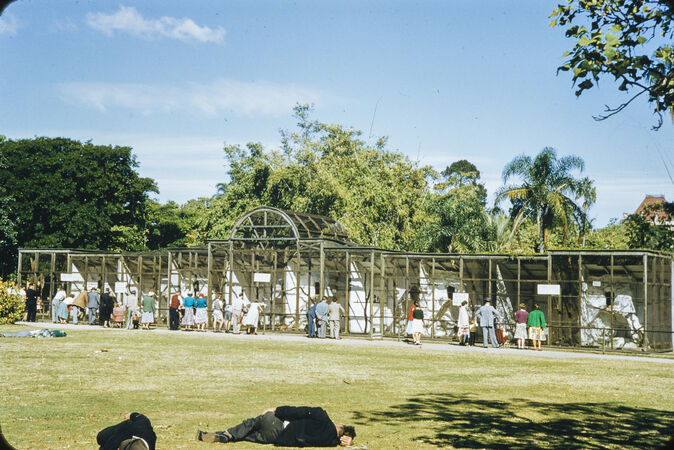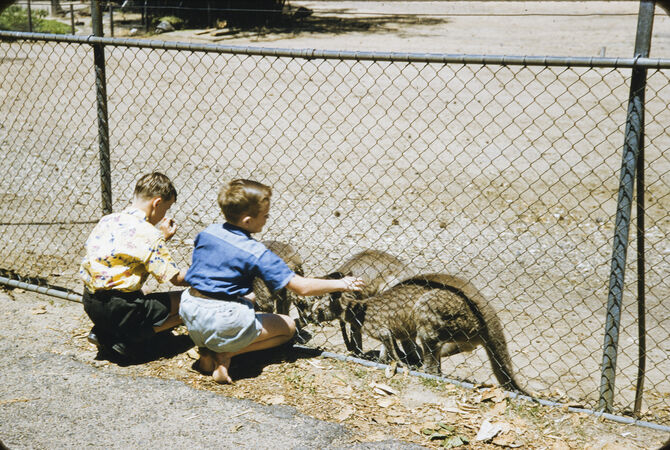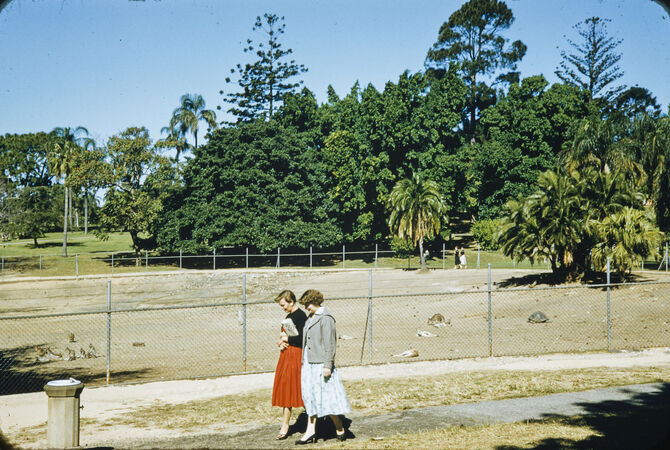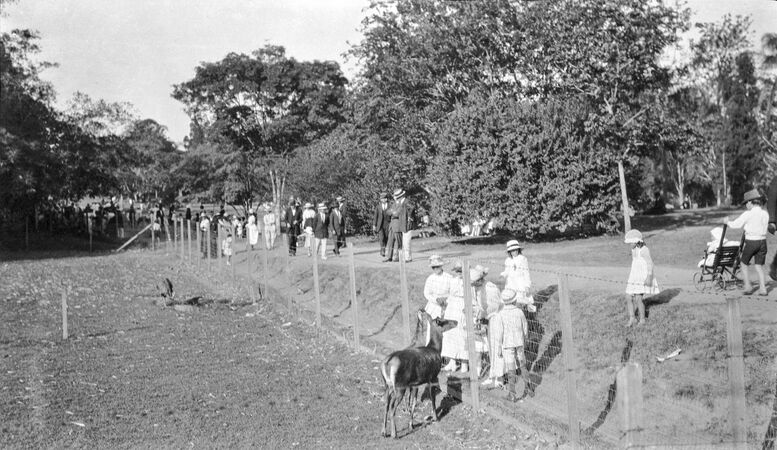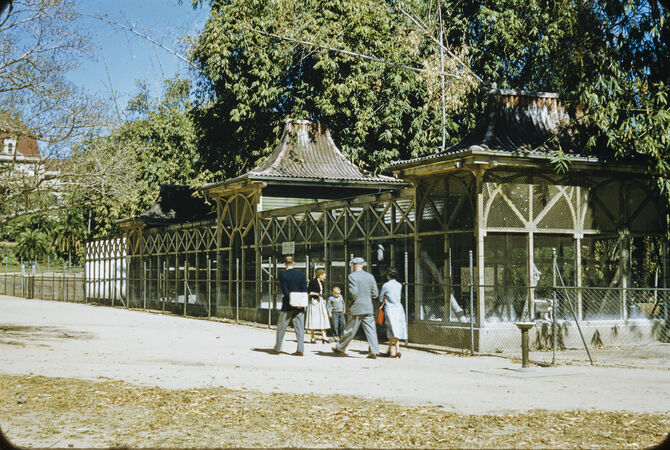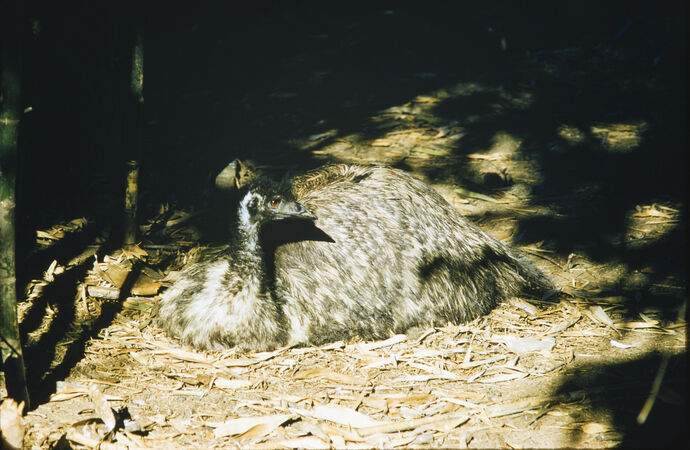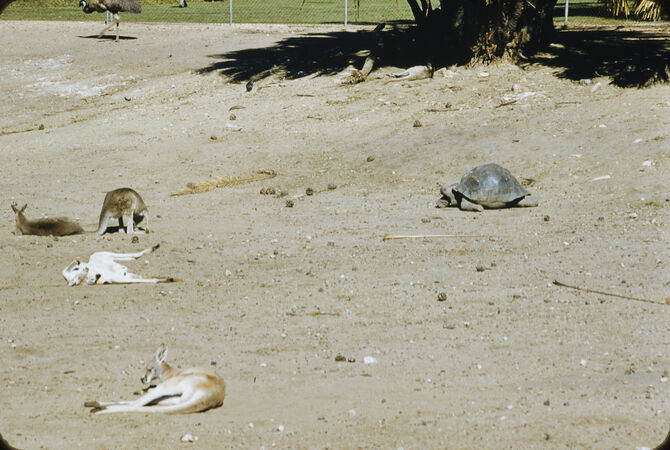The zoo that wasn't: Brisbane's Zoological Gardens
By Chris Currie | 4 January 2024
Was there ever a Brisbane Zoo in the city? The answer is ... sort of. By the time of its closure in 1953, over a million people had visited what became unofficially known as Brisbane Zoological Gardens, located within the Brisbane City Botanic Gardens.
Every Tom, Dick and Harry – the first animal residents of 'Brisbane Zoo'
The site of the Brisbane City Botanic Gardens was surveyed in 1828 and originally used as agricultural gardens to feed the penal settlement of ‘Moreton Bay’, still part of New South Wales. The Gardens were established officially in 1855, under the stewardship of Superintendent Walter Hill.
The first recorded animal residents of the Gardens were three tortoises – Tom, Dick and Harry – donated in 1860 by John Clements Wickham. Wickham lived in Newstead House and was the Police Magistrate and Government Resident of Moreton Bay until Queensland gained statehood in 1859.
The tortoises came from the Galapagos Islands, and the (likely apocryphal) story goes that they were presented to Wickham by none other than Charles Darwin. Dick died in the 1893 Flood and Tom in 1929.
In 1952, Harry was moved to Fleay’s Fauna Sanctuary on the Gold Coast, where it was discovered he was actually female. The newly-named Harriet was relocated to Beerwah in 1987 (to what would become Australia Zoo), where she passed away in 2006 at the age of 176.
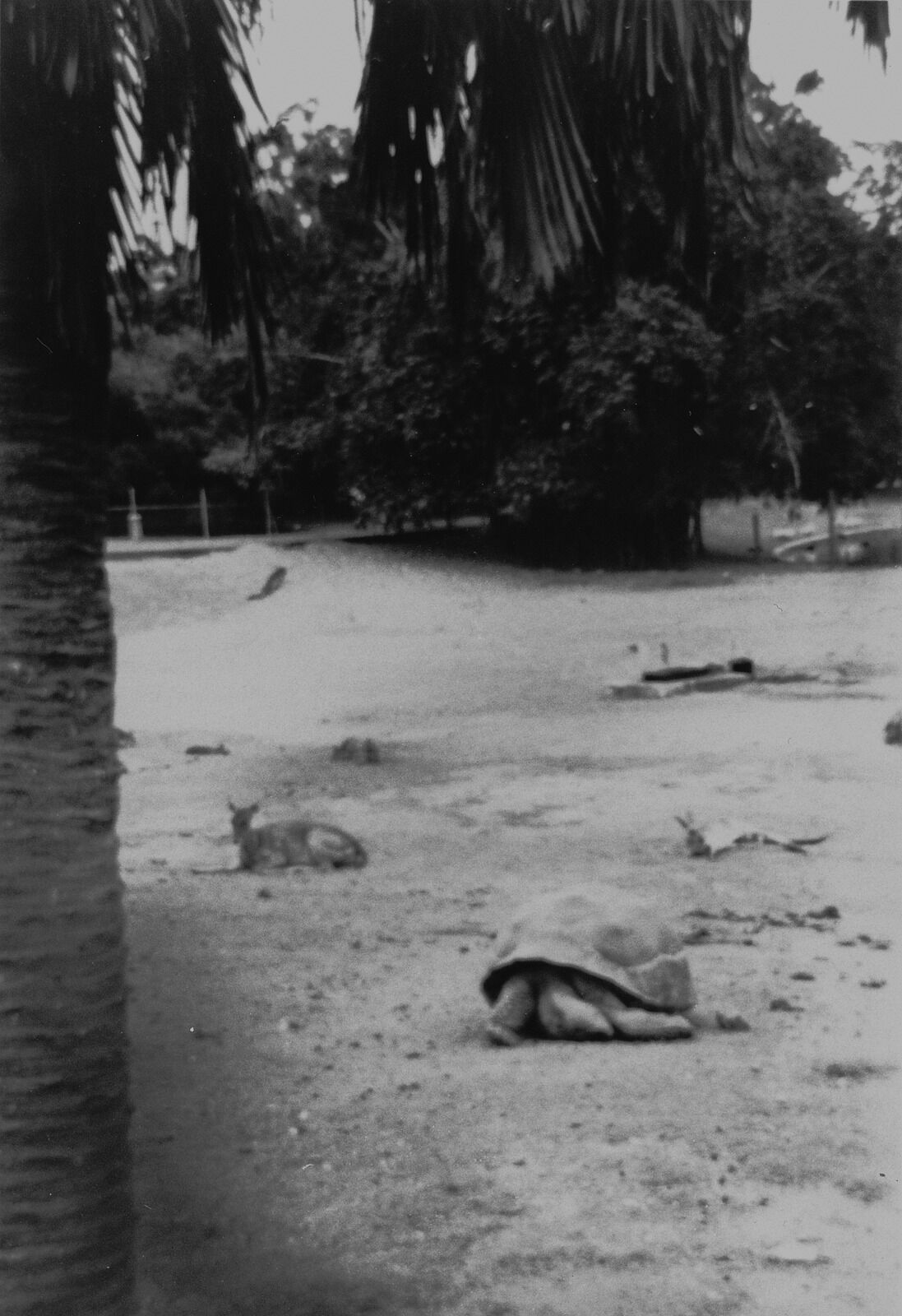
Harriet the Galapagos tortoise is seen here at the Brisbane City Botanic Gardens in 1950.
The matter of a zoological collection – a Brisbane zoo beginning
From the beginning, there appears to have been no restrictions or rules over the introduction of animals. The Gardens’ 1879 Annual Report makes mention of a certain bird fancier ‘Mr. Mortimer’ who ‘let loose a few ... Budgerygar parrots’ who ‘appear to have taken kindly to their change of location.’
Despite the animal arrivals, concerns were being raised in local newspapers as early as 1890 as to why Queensland was ‘so far behind’ southern colonies in ‘the matter of a zoological collection’.
According to Annual Reports, a zoo of sorts began under the curation of Philip John MacMahon from 1889, with an enclosure for emus and an aviary. Two years later, much fanfare was given to the construction of a bear pit, within which two black bears obtained from Japan by a ‘Justice Tubb’ went about their business for the amusement of onlookers.
In January 1906, one of the bears escaped the pit and enjoyed ‘an evening stroll’ on the Government House grounds, spending ‘enjoyable evening’ in the Gardens after evading capture, before returning to the pit ‘of his own accord’ the next morning.
Where do you put a Brisbane zoo?
By 1908, the idea of building a Brisbane zoo had gained further traction, with the formation of the Queensland Zoological Society, which included in its cohort Deputy Governer and former Premier Sir Arthur Morgan. The society claimed that they were receiving ‘letters from other parts of the world, offering exchanges of various wild animals, birds, &c., for our Queensland fauna.’
The favoured location for a Brisbane Zoo was Yeronga Park, where the Government reportedly went as far as to set aside 80 acres of space for such a purpose.
At least one local resident, however, was not in favour of this location. In a letter to The Brisbane Courier in August 1911, “A Yeronga Woman” made the following emphatic statement:
‘Yeronga is a quiet residential suburb, inhabited during the day chiefly by women and children, and the roaring of lions, the shrieks of hyenas, and the trumpeting of elephants will not add to the sense of peace and contentment which is now characteristic of the district.’
Despite the claim that Brisbane was the only capital city in the world not possessing a Zoological Garden, both the Premier and the Mayor steadfastly repeated that money could be better spent elsewhere.
It should be noted that much mirth was made in newspapers during this time regarding the possibility of members of parliament residing in a Brisbane zoo.

This poem, appearing in the 21 January 1920 edition of Brisbane's The Daily Mail, 'is the result of watching Brisbane's simians at their antics, and endeavouring to analyse election speeches and results at the same time.'
Who's afraid of a fretful porcupine?
The Botanic Gardens continued to accept some animals over the next decade, usually through one-off donations, including cassowaries, deer, kangaroos, pelicans, curassows, peacocks, blue cranes, two sheep ‘with three and five horns respectively’, monkeys (including one born in transit) and a ‘fretful porcupine’ discovered in a South Brisbane woodpile.
By the early 1920s, the preferred location for a zoo appeared to be Mt. Coot-tha (which was not to become the site of Brisbane’s second Botanic Gardens until 1976). In January 1923, in lieu of the expected success of this new location, the City Gardens reluctantly accepted – on behalf of the Queensland Zoological Society – a ‘sphinx baboon’ (mandrill) and two racoons from noted zoological collector Ellis Stanely Joseph.
The next month, the Zoological Society was offered two lionesses by boxer and showman Dave Meekin – one for free and one ‘at a bargain price’, owing to the pair’s ‘uncontrollable’ nature following an incident at the Lismore show when the older lion attempted to maul her trainer. The offer was declined.
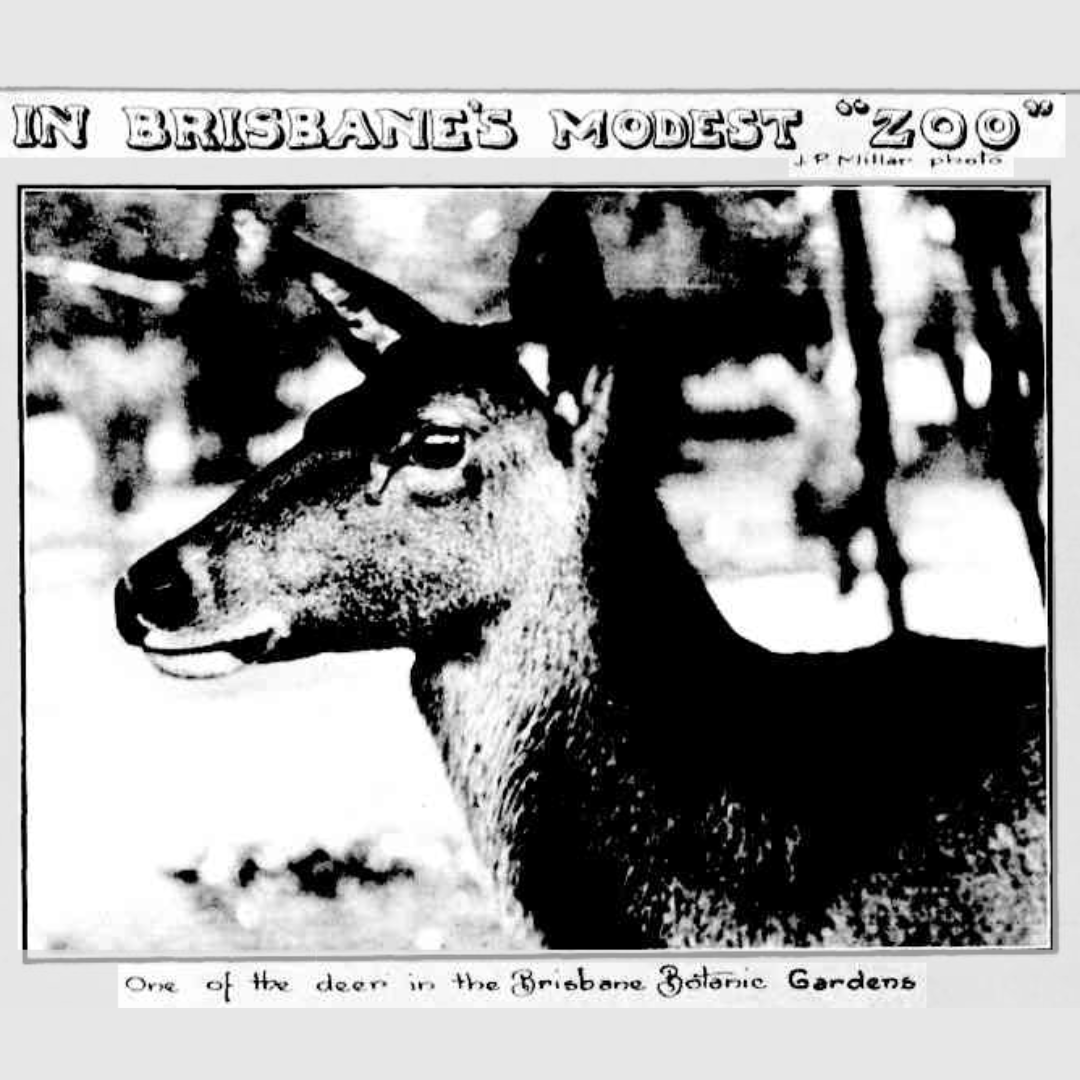
A zoo in name only
By this time, according to Gardens curator E.W. Bick (whose papers reside at State Library), visitors were now taking a “keen interest” in the zoological collection. Nonetheless, Brisbane Mayor M.J. Barry reiterated in 1924 that ‘until a large amount of money is available, Brisbane will have to wait for its Zoological Gardens’.
In 1926, the Gardens sent a collection of ‘zoological specimens’ (including an emu, a pair of wallabies, 16 rosellas and four carpet snakes) to the Netherlands in an exchange agreement with Rotterdam Zoo, receiving in return a pair of white swans and flamingos – the first of many exchanges the Gardens would conduct with zoos throughout the world.
By 1927, the Gardens were registered as an “A class zoo”, but only for the purposes of welcoming quarantined animals seized by the Customs Department (many of the ever-popular monkeys were reportedly once the pets of visiting sailors who didn’t want to pay the £50 quarantine bond).
Monkey memories
One character that appears in many reminiscences of the Brisbane Zoological Gardens is a baboon called Jacko, a ‘knowing chap and general favourite’ who would feast on whatever was pushed through his bars, including ‘stale nuts, doubtful chocolates, and cigarette butts’. Arguably the Gardens’ most notable resident since arriving in 1914, Jacko was once involved in a love triangle, bit his handler drunk on rum, and was generally taunted by the curious public. Jacko passed away in August 1950, ‘about the age of 50’, with a view to becoming an exhibit at Queensland Museum.
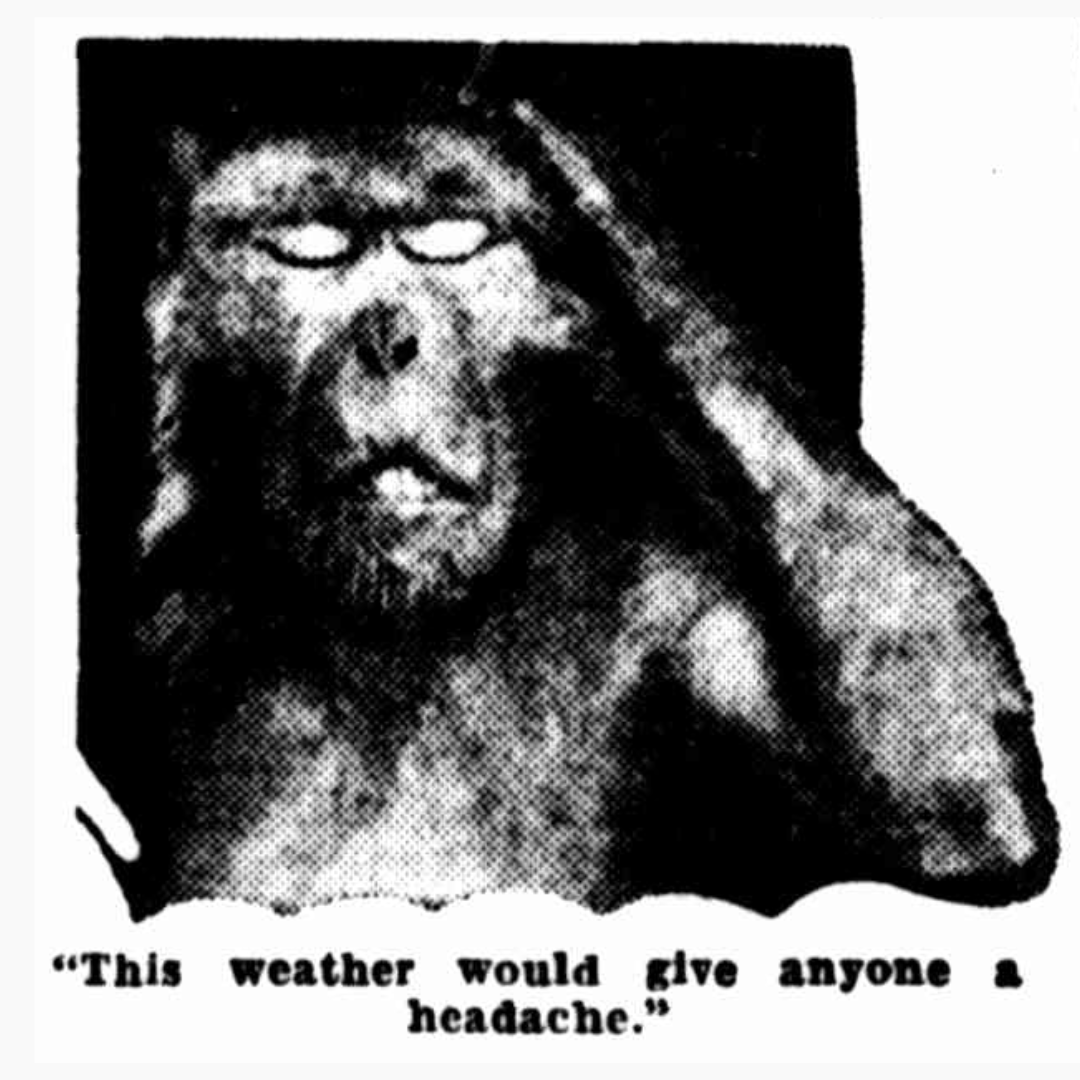
Jacko the baboon ‘contemplating the sorrows of a wet Christmas’ in The Courier-Mail, Wednesday 27 December 1933.
Did Brisbane city ever have a zoo?
Up until as late as 1953, debate still raged on the merits of a Brisbane zoo. While it was never officially built, over a million people reportedly visited what became unofficially known as Brisbane Zoological Gardens, with may holding fond memories of their visits.
Brisbane’s zoo that wasn’t closed in 1958 due to ‘conflicts of interest, the cost of upkeep of the animals and the poor state of the animal enclosures’. The grounds were redesigned by Harry Oakman under the curatorship of Harold Caulfield, removing an old animal compound to create a pond and became a purely botanic garden.
Today the site of the old bear pit is a picnic shelter for visitors.
Sources
- An historic overview of the Brisbane Botanic Gardens 1828-2014, 2014, R.D. Mckinnon et al, City Botanic Gardens, John Oxley Library, State Library of Queensland.
- City Botanic Gardens self-guided walk, Brisbane City Council website, accessed 18 December 2024.
- Building Brisbane's history : structures, sculptures, stories and secrets, Helen Gregory and Dianne McLay, 2010, Woodslane Press, John Oxley Library, State Library of Queensland.
- Queensland newspaper archives, including: The Brisbane Courier, The Darling Downs Gazette, The Queenslander, Queensland Times, and The Telegraph, Trove website and John Oxley Library, State Library of Queensland.
- Report on the Brisbane Botanic Garden, 1874, Walter Hill, Brisbane, Queensland: Parliament, John Oxley Library, State Library of Queensland.
- Walter Hill of Brisbane's Botanic Garden, 2008, Gordon Smith, Greenslopes, Qld, John Oxley Library, State Library of Queensland.
- Una Gailey Prentice and Ernest Walter Bick papers., 1827-1986, Roger Prentice, John Oxley Library, State Library of Queensland.
- Zoological Collection and wildlife, Brisbane Botanic Treasures website, accessed 18 December 2024.
Comments
Your email address will not be published.
We welcome relevant, respectful comments.
